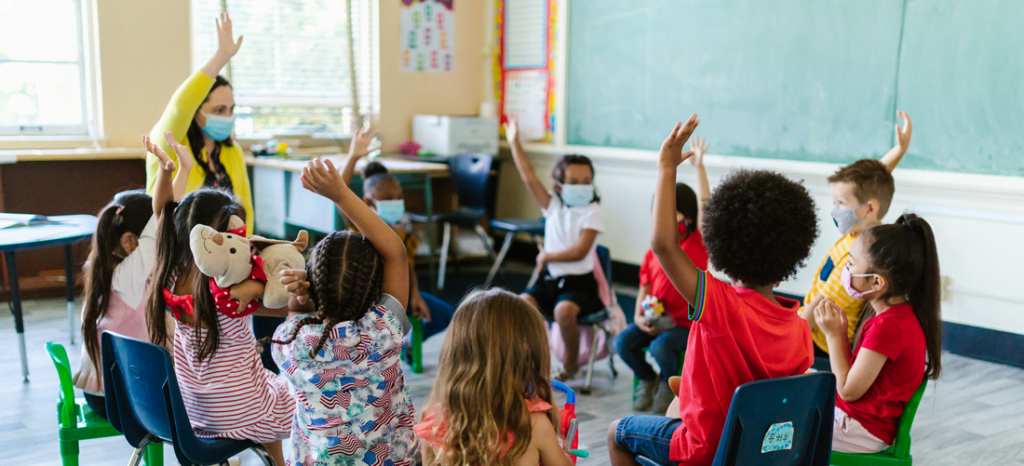You might be surprised to find out that platforms like Facebook, Twitter, LinkedIn, and Instagram are not just for posting selfies or sharing memes. They have become powerful tools for education, reshaping traditional learning and teaching methods. By exploring the role of social media in education, we unlock a wealth of opportunities for students and educators alike.
Social Media in Education: A Paradigm Shift
In the context of education, social media refers to various online platforms that promote communication, collaboration, and content creation. You, as a student or teacher, can use these platforms to share ideas, engage in discussions, and access a wealth of knowledge and resources beyond the traditional classroom.
Examples include educational forums, blogs, and even mainstream platforms like Twitter or Facebook when used for academic purposes. The application of social media in education has revolutionized the way we teach and learn, breaking down geographical boundaries and making education a more interactive and dynamic process.
Historically, the role of social media in education has evolved significantly. In its early stages, social media was viewed with skepticism, considered a distraction rather than an academic tool. However, as these platforms became more ubiquitous, the educational sector began to recognize the potential they held.
Early adopters used platforms like MySpace or the then-academic-focused Facebook to create informal study groups, share resources, and engage in intellectual discussions outside the classroom. As social media evolved, so did its role in education. Platforms like YouTube started hosting educational content, and new platforms, such as Edmodo, specifically designed for classroom use, emerged.
This trend continues today, with educators leveraging a wide array of social media and technology tools to enhance learning and teaching outcomes. It’s clear that social media has moved from being an educational outlier to a vital component of modern pedagogy.
Today, the landscape of social media in education is more diverse and dynamic than ever. Platforms like Khan Academy, Coursera, and EdX offer free or low-cost online courses from reputable institutions, democratizing access to quality education. Social networking sites like Facebook and LinkedIn have dedicated groups where students and educators can exchange ideas and resources.
Twitter, with its hashtag system, enables swift and wide dissemination of academic news, articles, and discussions. Instagram and Pinterest, though visually oriented, are used to share infographics, diagrams, and other educational visuals which aid in making complex ideas easy to understand. Meanwhile, YouTube remains a popular platform for educational tutorials and lectures.
Educators and students are also leveraging newer platforms like TikTok for micro-learning videos and Discord for community-based learning. These platforms exemplify the current trend in social media-based education: creating engaging, bite-sized educational content that can be easily digested and shared.
It’s important to note, however, that the use of social media in education is not without its challenges. Issues like data privacy, digital divide, and the potential for distraction are concerns that educators must navigate. But with careful planning, and mindful usage, social media can significantly enhance the learning process, taking education beyond the traditional four walls of the classroom.
Advantages of Integrating Social Media in Education
Integrating social media into education can offer a wide range of advantages, enhancing the learning experience for both students and educators. Here are some key advantages and a discussion of each:
1. Enhanced Engagement and Collaboration
- Discussion Boards: Consider platforms like Facebook and LinkedIn; they both have integrated features that allow for the creation of discussion boards. These platforms can be utilized in an educational setting to facilitate group discussions among students and their instructors. For instance, a teacher can create a private group for his class on Facebook, post weekly discussion topics, and students can comment on the thread to engage in a robust intellectual exchange.
- Group Projects: Consider how you might use social media tools like Facebook Groups and Google Docs for group projects. You and your classmates can create a dedicated Facebook Group, providing a centralized space for discussions, sharing resources, updating task progress, and even conducting virtual meetings through Facebook’s video calling feature. At the same time, Google Docs enables real-time collaboration, where everyone can contribute to the project simultaneously, observing changes as they occur. These tools not only foster teamwork but also teach digital literacy, necessary in our increasingly digital world.
2. Personalized Learning Opportunities
- Adaptive Learning: Facebook has found its way into the classroom, offering adaptive learning opportunities. With its Groups feature, educators can create a virtual classroom environment that is interactive and collaborative. Here, personalized content can be shared, discussions initiated, and feedback provided in real-time. This adaptive learning approach fosters a sense of community among students and allows for tailored learning experiences based on each student’s unique needs and pace.
- Tailored Content: Consider the use of platforms such as Facebook or Twitter in a classroom setting. Teachers can create groups or feeds specific to their classes, and post tailored content that supports the curriculum – anything from video tutorials and articles to online quizzes. This tailored content is immediately accessible to students, who can review it at their own pace and engage with it in a manner that suits their learning style.
3. Real-World Application and Career Readiness
- Professional Networking: Consider the use of LinkedIn, a social media platform designed for professional networking. As a student, you can connect with industry professionals, follow companies of interest, and participate in group discussions relevant to your field of study. This kind of real-world engagement provides a dynamic learning environment that extends beyond the traditional classroom.
- Showcasing Work: Consider a platform like Instagram, frequently used by art and design students to showcase their work. By establishing a class account, students can post their projects, giving them a sense of pride and ownership over what they create. They can also interact with their peers’ work, providing constructive feedback and sparking creative discussions.
4. Global Connections and Cultural Awareness
- Virtual Exchange Programs: Platforms like Facebook, Twitter, and Instagram have made it possible to implement “Virtual Exchange Programs” that allow students from different parts of the world to connect, collaborate, and learn from each other. For instance, a school in the United States can pair up with a school in Japan to exchange cultural experiences, language learning, and even collaborate on projects, all through these social media platforms. These virtual exchange programs break down geographical barriers and promote global learning, which is a significant advantage of integrating social media in education.
- Learning from Diverse Perspectives: Consider Twitter, for instance, a popular social media tool often used for ‘Learning from Diverse Perspectives.’ By creating a classroom hashtag, educators can encourage students to share articles, opinions, and queries related to the subject matter. Students, in turn, can follow renowned experts, academic institutions, or scientific journals to gain insights beyond the traditional classroom setup. This practice nurtures critical thinking and broadens their horizons as they get exposed to a multitude of viewpoints from across the globe. It’s an excellent example of how integrating social media in education can transform the learning experience, making it more dynamic, engaging, and enlightening.
5. Instant Access to Information
- News and Updates: One practical example of social media tools being used for “News and Updates” in education is the use of Twitter. Schools, teachers, and educational institutions can create dedicated Twitter handles to post information swiftly about upcoming events, assignment deadlines, or changes in schedule. They can use hashtags to keep content organized and easy to find. The major advantage of integrating such social media tools in education is that information reaches students in real time. It’s right there on the platform you’re likely already using, saving time, enhancing communication, and promoting quick and efficient information sharing.
- Resource Sharing: Take for instance, the use of Pinterest in the classroom. You, as an educator, can create a board specifically for your class, curating resources related to the subject you’re teaching. These resources could range from infographics, articles, videos to links to other educational sites. You can even encourage students to create their own boards and share resources they’ve found useful. This facilitates a culture of collaborative learning and resource sharing. The advantage of integrating social media such as Pinterest in education is multi-fold. It not only makes learning more engaging and interactive but also empowers students to take an active role in their learning process.
6. Informal Learning Opportunities
- Educational Communities: Platforms like Facebook and LinkedIn have been key in fostering “Educational Communities”. For instance, Facebook Groups enable educators to create virtual classrooms. Here, teachers and students can share educational materials, discuss assignments, and even collaborate on projects. Similarly, LinkedIn Learning offers a plethora of online courses, connecting students with industry experts in various fields. The advantage is evident – social media in education enhances accessibility to knowledge, fosters collaboration, and facilitates a community learning environment that goes beyond the traditional classroom walls. By integrating social media into education, we are harnessing its potential to make learning more interactive, inclusive, and engaging.
- YouTube Tutorials: As a student, you may have noticed how certain topics seem to be more complex and harder to grasp when explained in the classroom. In such cases, you have the opportunity to turn to YouTube. On this platform, educators from around the world post video tutorials explaining these complex topics in an easily digestible manner. You can pause, rewind, or rewatch these videos until you fully understand the concept. This ability to learn at your own pace, coupled with the convenience of accessing the content anytime and anywhere, makes YouTube tutorials a significant advantage of integrating social media in education.
7. Increased Communication
- Teacher-Student Communication: Social media tools like Facebook Groups and Google Classroom have become quite popular in the realm of teacher-student communication. Imagine a scenario where a teacher creates a Facebook Group for her class, sharing lesson materials, reminders for assignments, and even hosting live Q&A sessions. Students, on the other hand, can ask questions, discuss topics, and help each other out. Similarly, Google Classroom allows educators to distribute and grade assignments in a paperless way, while students can keep track of what’s due on the Assignments page. These platforms not only make communication more efficient but also foster a sense of community among students. Integrating social media in education is advantageous as it bridges the gap between teacher and student, making education more collaborative and interactive.
- Parent-Teacher Communication: Take, for example, platforms like ClassDojo or Edmodo. These social media tools create a direct line of communication between teachers and parents, keeping everyone involved in a student’s learning process. By posting updates on classroom activities, assignment deadlines, and student progress, teachers can ensure parents are aware of their child’s academic journey. Plus, these platforms offer instant messaging features, enabling real-time discussions and prompt resolution of concerns. The integration of such tools in education brings transparency, fosters a sense of community, and encourages active participation from all parties in a child’s learning environment.
8. Active Learning and Multimedia Integration
- Interactive Content: Consider platforms like Quizlet or Kahoot, popular social media tools often used in the classroom to create interactive content. These platforms allow educators to create custom quizzes or flashcards on any topic, providing an enjoyable and effective way for students to study. Students can also access these tools on their own time, encouraging independent learning. This is a clear advantage of integrating social media in education. It not only promotes active participation but also caters to different learning styles while making learning more attractive and fun.
- Gamification: With the use of gamification, regular tasks can be transformed into challenges or games. For instance, teachers could use Twitter to host a trivia contest where students tweet the answers using the class hashtag. This integration of social media tools in education not only enhances student engagement but also promotes the development of digital communication skills in a fun and interactive way.
9. Cost-Effective Learning Resources
- Free Educational Content: YouTube is not just a site for music videos and cat antics; it also offers a wealth of educational content for free. TED Talks, Khan Academy, Crash Course, and even individual educators who create channels dedicated to specific subjects, all make learning accessible and engaging for students all over the world. The advantage here is twofold. Firstly, it caters to diverse learning styles, with some students finding visual and auditory learning more effective. Secondly, it allows students to learn at their own pace, replaying and revisiting content as many times as needed. This way, social media truly democratizes education, breaking down barriers of accessibility and cost, and making learning a continuous and interactive process.
10. Feedback and Assessment
- Peer Feedback: Consider a tool like Google Docs, which is widely used in educational settings. It facilitates collaborative learning by allowing students to work on the same document simultaneously. Here’s where social media steps in. Students can share their Google Docs link on a closed Facebook group or Twitter thread for their class. Their peers can then access the document, make comments, suggest edits, or ask questions directly on the document.
- Real-time Assessment: Twitter can serve as a real-time assessment tool in education. Teachers can post quick questions related to the lesson and students can respond using a specific hashtag. The answers can be examined and evaluated on the spot, providing the educator with an immediate understanding of the students’ comprehension of the material. This use of social media in education allows for immediate feedback, increased student engagement, and reinforces the learning process in a dynamic, contemporary way.
While integrating social media into education offers numerous advantages, it’s essential to do so responsibly, addressing concerns related to privacy, digital literacy, and distractions to maximize the benefits of these platforms in the educational setting.
Conclusion
Integrating social media into education opens up a world of possibilities for both educators and students. It enhances communication, encourages creativity, and fosters a sense of community among learners, keeping them engaged and motivated. It’s a modern and innovative approach that brings education to the fingertips of students, helping them navigate through the digital age with confidence. Remember, the key to a successful integration of social media in education is constant monitoring and adapting with the evolving digital landscape. With careful planning and execution, the educational benefits can be tremendous. Embrace the change, for the future of education is here, and it’s digital.
You might also like:
- 10 Powerful Advantages of Using Blockchain in Education
- Technology and Memory: The Impact on Learning


